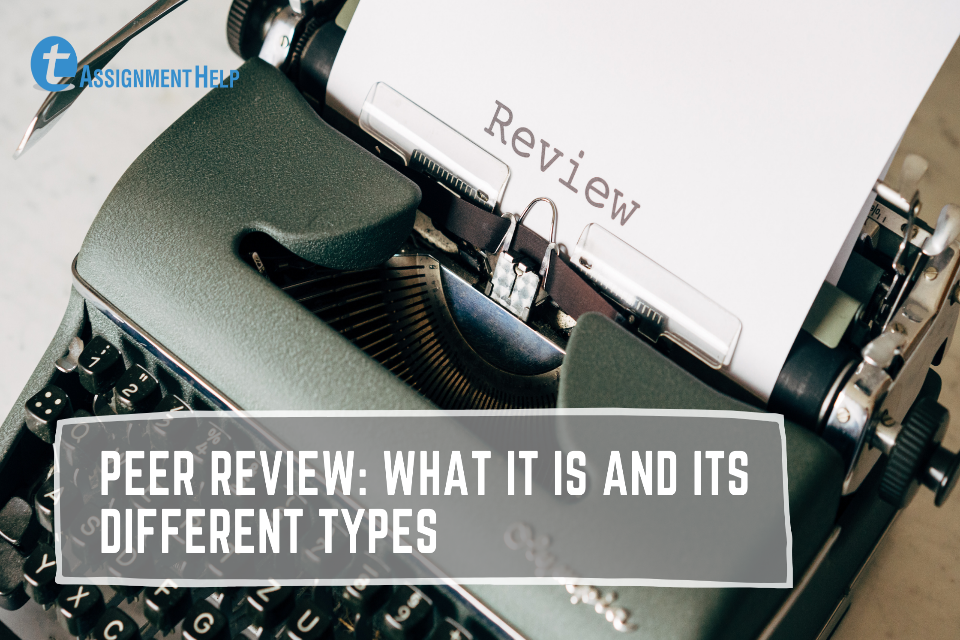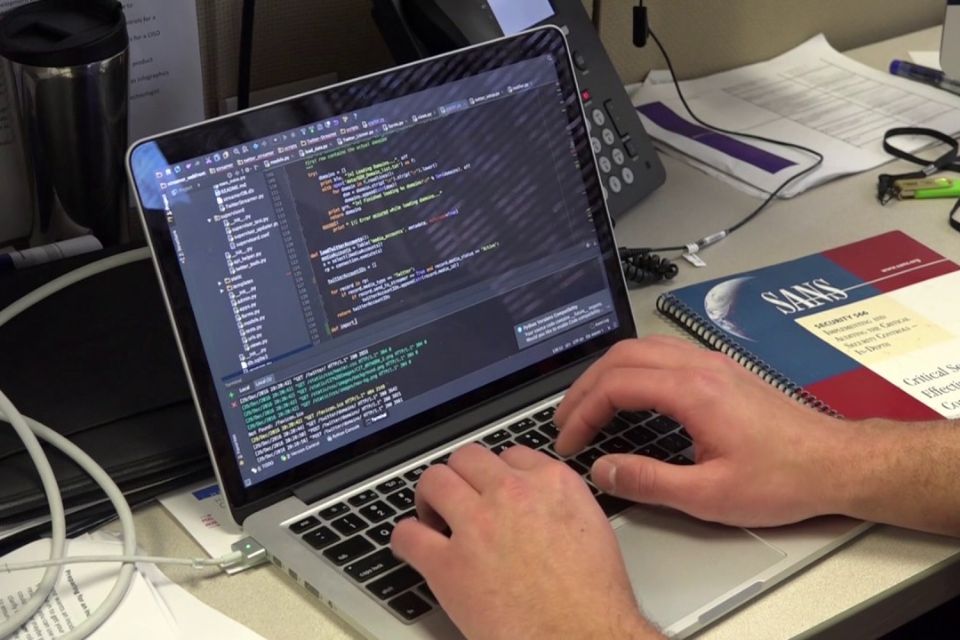Peer Review: What it is and its Different Types

Analyzing contributions to an academic journal is known as peer review. A board of reviewers from the same field of study determines whether to approve each proposal for publication based on rigorous parameters.
Because of the rigorous process that peer-reviewed publications go through before publication, they are regarded as highly reputable sources.
Peer review comes in a variety of types. The key distinction between all varieties is how the writers, reviewers, and editors are aware of each other’s identities. The following are the most prevalent types:
- Open review
- Single-blind review
- Double-blind review
- Triple-blind review
- Collaborative review
In contrast, peer assessment is a procedure in which your peer’s comments on anything you have drafted based on a set of standards established by a teacher. They then provide constructive criticism, praise, or suggestions to assist you in improving your manuscript.
What is the motive of a peer review?
Peer review is used in several academic domains to decide if an article fits publishing. Peer review improves the manuscript’s credibility. As a result, academic publications are among the most reliable resources available.
Peer review is also frequent in non-academic contexts. For example, peer review examines grant proposals by the UN, the EU, and several other individual countries. It is also commonly used as a training or quality-of-care metric in clinical and health-related disciplines.
Peer assessment is a common instructional method in the class. Both accepting and giving criticism is supposed to improve learning by encouraging students to develop critical and collective thoughts.
Peer review: The different types
Several different types of peer review exist, based on the type of publication.
Single-blind peer review
One of the most common types of peer review is single-blind peer review. It is by far the most prevalent kind of peer review. The author is not aware of the reviewers’ identity in this case.
Though this allows reviewers to provide input without the risk of intervention from the author, this practice has received a lot of criticism in recent years. Many people believe that single-blind reviews might result in intellectual infringement or poaching or that anonymous comments can cause the reviewers to become harsh.
Double-blind peer review
In this case, both the author and the reviewers are unknown.
The benefits of a double-blind review include reducing the possibility of bias on the reviewer’s part while also safeguarding the process’s integrity. In principle, it also results in submissions being accepted based on their worth rather than the author’s credibility.
Triple-blind peer review
Although triple-blind review—in which the author, reviewers, and editors are anonymous—is theoretically possible, it is tricky to conduct in reality.
According to proponents, triple-blind review for journal submissions reduces possible conflicts of interest and prejudices. Nevertheless, maintaining anonymity is a logistical challenge, and current editing tools may not always succeed in completely concealing all participants.
Open review
Finally, in the case of an open review process, every stakeholder is always aware of each other’s identities. In addition, open review frequently includes comments from a broader audience, like an internet forum or reviewer feedback included in the final publication.
Though many claims that increased openness reduces plagiarism and unfairness, it can also impact the quality of future scholarship in case the reviewer feels compelled to filter their remarks.
The practice of peer review
The following steps are included in the peer-review process:
- The author must first send the text to the editor.
- The editor has two options:
- Return the document to the author if rejected, or
- Please submit it to the peer reviewer you’ve chosen
- After then, the peer review procedure takes place. First, the reviewer provides input on the text, highlighting any significant or minor flaws and advising on what modifications should be done.
- Finally, the author receives the revised work. They make the necessary changes and resubmit the document for publication.
Although this is the overall procedure, every journal’s review process is subtly different. Therefore, if you want to publish in a certain publication, remember to read the peer review rules thoroughly!
Several journals now indicate who reviewed each manuscript in the final publication to be more open. There are also more options for cooperation and criticism, with some publications enabling reviewers and writers to communicate openly.
Giving feedback to your peers
Conducting a peer review or peer assessment might be intimidating at first. You may employ various effective strategies if you’re unsure about where to begin.
Write a summary of the argument.
Summing up the critical argument allows the author to observe how readers perceive their argument and provides you with a starting point for offering input. In case of problems, it is an indication that your position needs to be clarified, simplified, or rephrased.
If the author notices that you’ve misinterpreted their point, they’ll have a chance to clarify any misconceptions after receiving the work back.
Bifurcate feedback into significant and minor issues
Keeping feedback organized might be difficult. One technique is, to begin with, the larger concerns and work your way down to the lesser ones. It’s generally good to keep your suggestions in point form so that the author can refer to them.
Significant difficulties are faults with the manuscript’s style, flow, or essential points. Spelling problems, citation errors, and other minor, easy-to-implement comments are examples of minor concerns.
Advice: Don’t get too caught up in the tiny details. Remember that the author must handle spelling and grammatical concerns rather than reading and addressing them one by one if the document has plenty of them.
Anything which helps them enhance their argument or fix significant technical faults is the ideal feedback you can give.
Provide the kind of feedback you’d want to receive.
No one enjoys being criticized, and giving honest criticism without seeming harsh or negative may be challenging. In the “compliment sandwich,” where you “sandwich” the constructive feedback between two praises, is one method you may apply here.
Make sure you’re providing specific, practical input which would assist the author in completing an excellent final draft. Although you should not signify what to do, the comments should assist them in resolving any flaws which they might have overlooked.
Generally, your input must be as follows:
- Simple to comprehend
- Precise
- Constructive
Benefits of Peer Review
Peer review has a long and illustrious history in academics, stretching back centuries. It gives measurements, expectations, and direction to diverse disciplines of study to guarantee that published work meets predefined criteria.
✔ Ensures that published research is of high quality.
Peer review can prevent the publication of clearly flawed, faked, or otherwise untrustworthy research. In addition, any information that triggers potential problems for reviewers can be thoroughly reviewed during the review stage, avoiding the publication of plagiarized or duplicated research.
✔ You’ll be able to get input from professionals in your area.
Peer review is a fantastic way to gain feedback from known professionals in your industry and enhance your writing by following their advice and suggestions. Experts who are familiar with your topic area may provide input on both style and substance and propose new research routes that you hadn’t explored.
✔ It assists you in identifying any flaws in your argument.
Peer review serves as the first line of defence, ensuring that your thesis is coherent or that there are no loopholes, ambiguous phrases, or unresolved concerns for non-researchers. Eventually, you’ll wind up with a more comprehensive, coherent piece this way.
Peer review criticisms
Although peer review is a frequently used tool for determining reliability, it is not without flaws.
X Reviewer scepticism
The much more open double-blind approach isn’t widely used, contributing to review bias. A typical argument might be that an outstanding manuscript by a young researcher might be rejected while a paper of low-quality written by an accomplished academic gets approved.
X Publication delays
Peer review can cause significant delays in publication due to its complexity. Research that was contemporary when submitted may not be as pertinent when it is published.
X Human mistake.
Peer review is inherently prone to human mistakes. Moreover, because reviewers will have to recreate full experiments to establish the authenticity of results, fabrication is frequently undetectable.
Frequently Asked Questions
What is peer review, and how does it work?
Ans. The practice of reviewing contributions to an academic publication is known as peer review. A board of reviewers in the same field of study determines whether to approve each proposal for publication based on rigorous criteria.
How is peer review significant?
Ans. Peer review can prevent the publication of clearly flawed, faked, or otherwise unreliable research. It’s also a great way to acquire input from famous professionals in your area.
What’s the difference between a peer review and a peer assessment?
Ans. Peer review is a process in which a board of reviewers decides whether or not to accept a manuscript for publication based on a set of strict criteria. Alternatively, peer assessment is a method in which your peers comment on something you have written using a set of criteria established by a teacher.
Total Assignment Help
Incase, you are looking for an opportunity to work from home and earn big money. TotalAssignmenthelp Affiliate program is the best choice for you.
Do visit :https://www.totalassignmenthelp.com/affiliate-program for more details
Total Assignment help is an assignment help Online service available in 9 countries. Our local operations span across Australia, US, UK, South east Asia and the Middle East. With extensive experience in academic writing, Total assignment help has a strong track record delivering quality writing at a nominal price that meet the unique needs of students in our local markets.
We have specialized network of highly trained writers, who can provide best possible assignment help solution for all your needs. Next time you are looking for assignment help, make sure to give us a try.
Looking for Assignment Help from Top Experts ?
Get the best Assignment Help from leading experts from the field of academics with assured onetime, 100% plagiarism free and top Quality delivery.



